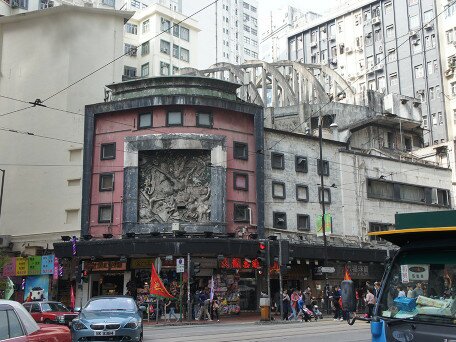Hong Kong Art Deco: Theatre buildings and the rise of modern cinema in transforming the city’s socio-cultural landscape
- 項目計劃:
- 優配研究金
- 項目年份:
- 2019/2020
- 項目負責人:
- 劉亮國博士

This research argues that Art Deco, a modern architectural style, can be understood as a form of entertainment and demonstration of resistance of the colonized in early twentieth-century Hong Kong.
In the years surrounding the second World War from the 1930s-50s, numerous new theatres opened in different districts across Hong Kong including Majestic Theatre (1928 in Jordan), Cathay Theatre (1939 in Wanchai), Capitol Theatre (1952 in Causeway Bay), etc. These buildings indicated a flourishing of entertainment businesses in Hong Kong and the high demand of this form of leisure from the local society. Interestingly, most of these theatre buildings were built in the Art Deco architectural style. Most of these theatres are now demolished or abandoned, but a socio-history of entertainment and theatre buildings in Hong Kong are missing in academia and there is a need of repositioning in the field. This research argues that Art Deco, a modern architectural style, can be understood as a form of entertainment and demonstration of resistance of the colonized in early twentieth century Hong Kong. The study also aims at demonstrating that these theatre buildings are not passive objects, but rather subjects that are able to consume the dominating culture to ‘self-fashion’ and ‘self-represent’, in using postcolonial theoretical terms. Previous research has been done on Chinese cinema operators and cinema business in Hong Kong in the early twentieth century, but little research has been conducted to link the architecture or socio-cultural landscape of Hong Kong cinema to postcolonial theories. This project will envision a three-tiered impact. First, the research will reveal the ways in which the patron, architect and the audience of the theatre buildings interacted with each other in laying the foundation of modern cinema and public entertainment history in Hong Kong. Second, based on archival research and visual ethnography, the research will adopt postcolonial theory to analyse and problematize the architectures, and investigate the ways that they ‘self-fashion’ and ‘self-represent’ different identities. Third, on top of formulating a database on Art Deco theatres, the research will propose ways of strengthening the conservation policy for the remaining few surviving Art Deco theatres in Hong Kong. The project will ultimately examine the reach of Art Deco into everyday life of Hong Kong in the form of architecture and cinema, critique the dynamics between the dominated-subjugated in colonial Hong Kong, and offer a new way to conserve architectural heritage through emphasizing its aesthetic and socio-cultural implications.








